Along the Wall with Hadrian's cavalry
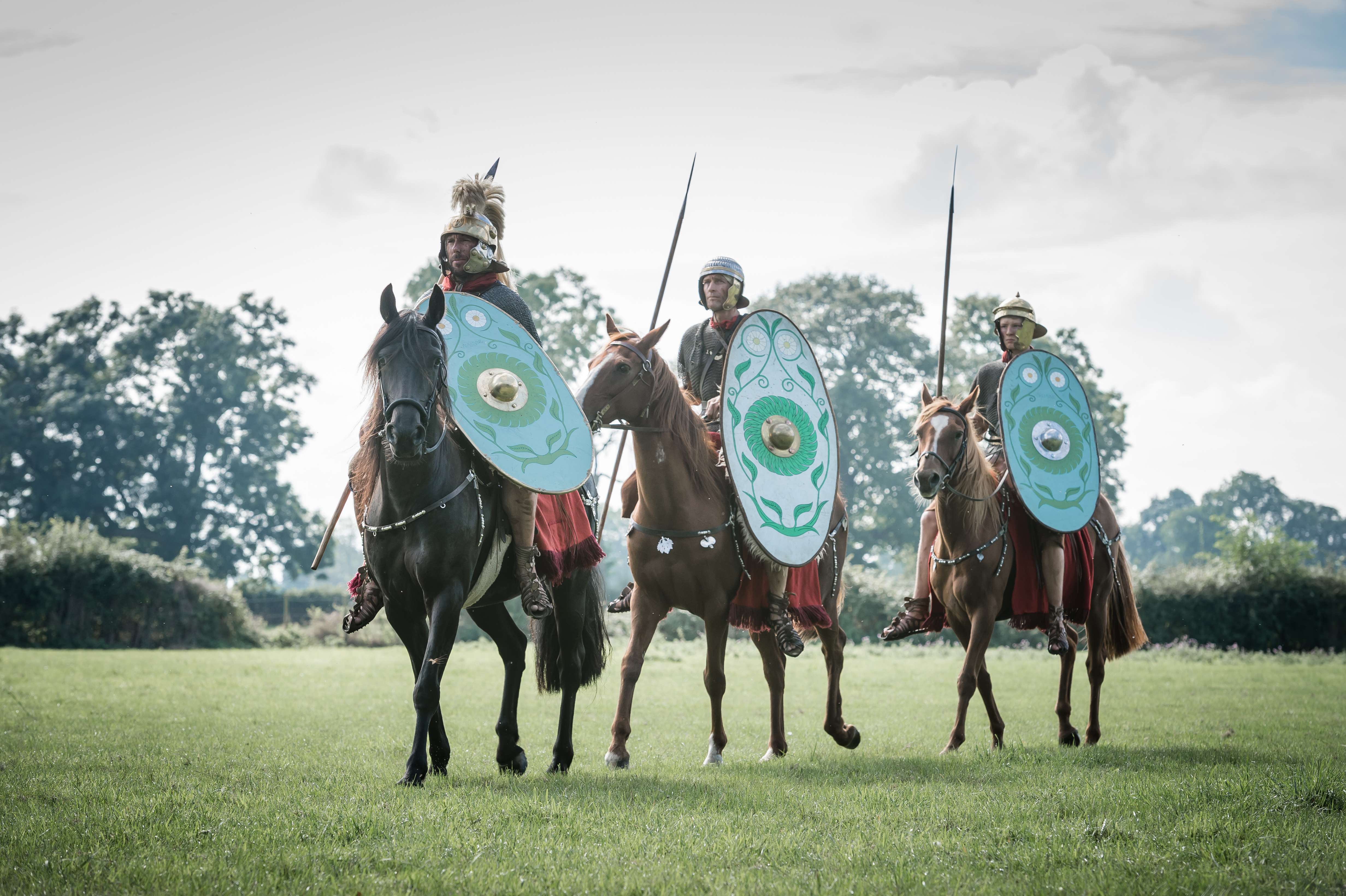
Theresa Thompson investigates the history of a very hot subject, which can have cataclysmic The 1900th anniversary of Hadrian becoming Emperor of the Roman Empire is being celebrated in a series of exhibitions at 10 different museums along the great wall he built from east to west across northern Britain, reports Mike C Bishop
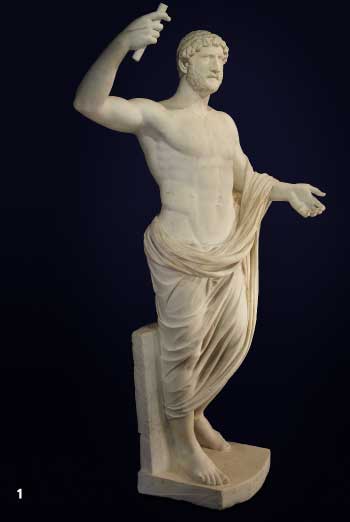
In Roman Britain, at any given time, there were at least 9000 auxiliary cavalry in the province, divided between alae (military formations composed of conscripts from the socii, Rome's Italian military allies), elite cavalry units, and the slightly lower-status mixed cohorts, which contained both infantry and cavalry. In Minerva (May/June 2016) Jon Coulston gave readers an introduction to Roman cavalry; now, Hadrian's Cavalry, a series of exhibitions at sites along the length of the great wall built by Emperor Hadrian (1), offers visitors the chance to examine all aspects of life in the Roman cavalry. Although it may seem strange considering it was a static mural frontier, the Roman cavalry played a very important part in the garrisoning of Hadrian's Wall.
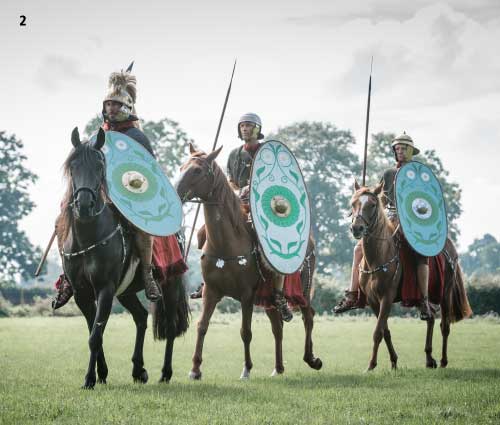
Approximately one third of the Wall garrison was cavalry, either as alae or part-mounted cohortes equitatae. This suggests that they were regarded as an important component of the frontier's defences. Cavalry offered the opportunity to mount wider-ranging patrols than were possible for infantry, and it is noticeable that they were usually placed close to north-south roads.
Cavalry at Burgh-by-Sands and Stanwix flanked the main western road to the north through Carlisle (equivalent to the A6), while the central north road, the Dere Street (now the A68) was likewise flanked by cavalry at Chesters and Haltonchesters. We know from elsewhere in the empire that individual riders could also be used as couriers, so cavalry had an important communications role too. Ultimately, though, they also served to project Roman power through their sheer presence, reinforced by their elaborate equipment.

Now their power and skill is being celebrated in Hadrian's Cavalry, a series of exhibitions at museums along the length of Hadrian's Wall. This is unusual in that it is a 'dispersed exhibition', stretching from Segedunum in Wallsend at the eastern end of the Wall to Tullie House in Carlisle in the west. A total of 10 museums and sites are involved, each focusing on different aspects of the theme and each displaying internationally significant objects, on loan from other museums and private collectors, as well as cavalry-related material from their own collections. There will also be live cavalry events performed by re-enactors (2).
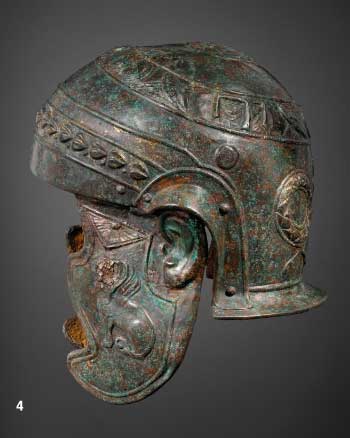
The idea of a dispersed exhibition along Hadrian's Wall was road-tested in 2014 with Wall Face, in which portraits of leading archaeologists involved in the excavation, preservation and study of the Wall were displayed at a series of venues, most of which are participating again in Hadrian's Cavalry.
Several major museums have loaned material for the displays, including the British Museum (BM), National Museums of Scotland (NMS), the Limesmuseum Aalen, the Archäologische Staatssammlung in Munich and the Musée d'Art Classique de Mougins (MACM). Artefacts have also been borrowed from private collections, which means this is almost certainly the largest and most impressive display of Roman cavalry equipment ever seen in one exhibition.
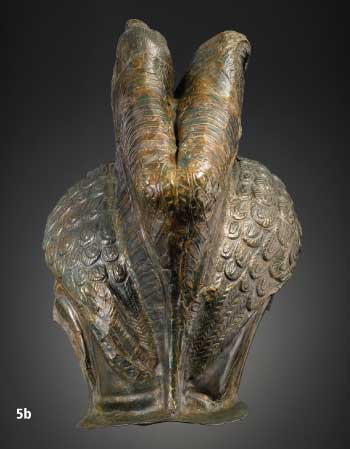
The equipment on show at the various sites not only illustrates what was in use at the time of Hadrian, but also how it developed in the later 2nd and 3rd centuries AD. The museum at Segedunum in Wallsend (where even the Metro station signs are bilingual – in English and Latin) has the mask from a face-mask helmet (3) and a cavalry battle helmet of the type that would have been in use under Hadrian (4). Both have been loaned by MACM.
There is also an example of a later pseudo-Corinthian helmet adorned with twin eagles (5a and 5b). Battle helmets were often extremely elaborate but always had cheekpieces rather than face masks. The privately owned pieces in the display include an almost complete set of horse harness fittings, a complete sword, a dagger, and an embossed breastplate.
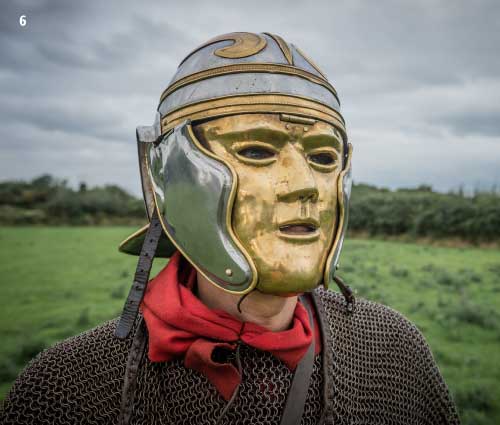
The world-renowned Ribchester face-mask helmet (8) from the British Museum will be displayed at the Great North Museum in Newcastle next to another, very similar, privately owned example (7), never before seen together. The Ribchester helmet probably belonged to one of the cavalry units subsequently posted between the fort at Ribchester and Chesters on Hadrian's Wall, the ala II Asturum. These two examples show what face-mask helmets looked like at the time of Hadrian.
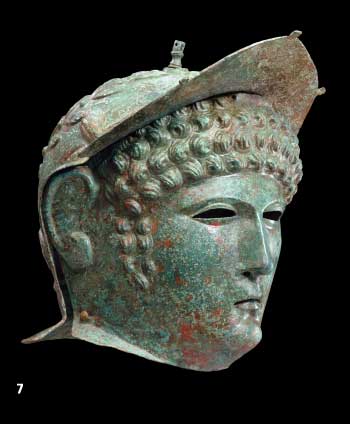
Apart from items of cavalry equipment from its own collection, Vindolanda has two eyeguards from Ribchester (found in the same hoard as the helmet), together with their own leather chamfron (protection for the face of a horse) and a highly decorated, metal chamfron (9) bearing an image of the goddess Minerva (from MACM) of a later type than the Vindolanda leather pieces, which makes an interesting comparison. There is also one of the earliest face-mask helmets from Newstead (loaned by the NMS), just over the border in Scotland, possibly the earliest example of its type from Roman Britain.
The Roman Army Museum at Carvoran has a set of four copper-alloy saddle horns from Newstead (loaned by NMS), inscribed with their owner's, or perhaps his horse's, name. These were characteristic of the Roman saddle, which lacked stirrups but kept the rider in place by means of these ingeniously shaped fittings (scholars still debate whether they were fitted to a wooden saddle-tree). Carvoran also has a pectoral from a private collection (11) – this was a large copper-alloy ornament that was placed over the breast of the horse, ostensibly for protection, but with time they became ever more elaborate and unwieldy, so that by the 3rd century AD they were less for defence and more for show.
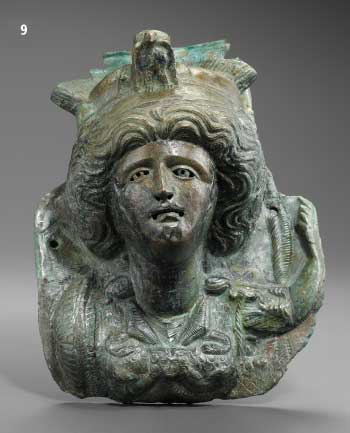
Like Segedunum, Tullie House in Carlisle features both battle and sports equipment. There is another Hadrianic battle helmet from MACM (10a and 10b), who have also loaned the later eagle-peaked, neo-Attic Ostrov-type helmet (12). Although these pieces represent the cavalry in battle, other finds show them at play. The truly astounding, privately owned Crosby Garrett Helmet (13), first exhibited here in 2013. There is also an Amazon face-mask helmet from Eining on loan from Munich, the first time a Trojan-type helmet has been seen alongside an Amazon type. These two types were probably worn by one of the teams in the hippika gymnasia (often referred to as 'cavalry sports') that would have been matched against a team representing the Greeks. These face-mask helmets show how the form had evolved in the 3rd century by pursuing a Trojan War theme. However, Tullie House also has a very early face mask from a private collection, from the time under the Emperor Augustus when they were first attached to infantry helmets to form a multi-purpose piece of cavalry headgear.
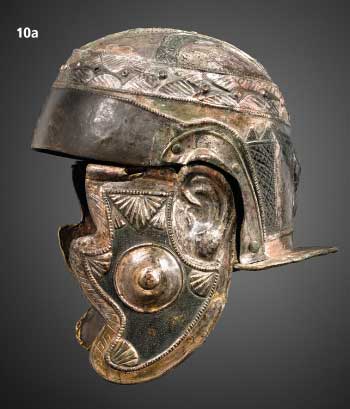
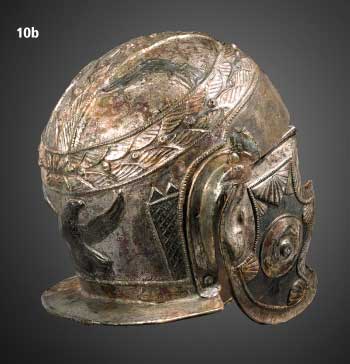
Finally, the Senhouse Roman Museum at Maryport has various items relating to the worship of Epona, the Celtic horse goddess (who was understandably popular with Roman cavalrymen).
Obviously, the idea of a dispersed exhibition is to encourage visitors to go to more than one venue along the Wall. It will also make visitors think about Hadrian's Wall in a slightly different way, enabling them to see it less as a static frontier but more as a base for control of the frontier zone.
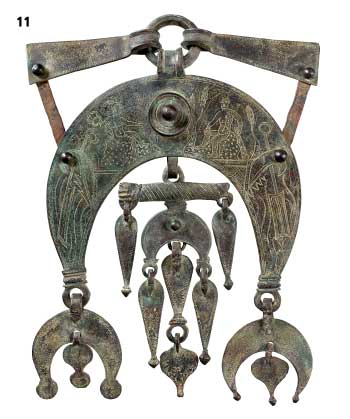
However, the exhibition is only one part of Hadrian's Cavalry, and there will be various associated events, including a specially commissioned piece of contemporary art at Chesters, public talks about Roman cavalry at various venues and some small-scale re-enactments (6). The most spectacular event, though, will be the much larger Turma! Hadrian's Cavalry Charge in Bitta Park in Carlisle in July.
Hadrian's Cavalry is an ambitious idea that aims to tell its story right across the Tyne-Solway isthmus, using the cavalry on Hadrian's Wall as a focus but to make it more alive it was felt that an element of spectacle was also needed, in other words, a major re-enactment display. Rather than the usual battle re-enactment (the sort of thing English Heritage did at Birdoswald during Hadrian's Wall Live! in 2015 and 2016) something new was needed and the Roman cavalry offered the perfect solution with the hippika gymnasia – the term is Greek because the Roman commander who described it, Flavius Arrianus, preferred to write in Greek. This was an elaborate combination of training exercise and display (a bit like Horse of the Year Show meets the Royal Tournament) that featured noise, colour, movement and more than a little role-playing. The re-creation of it will make a fitting climax to Hadrian's Cavalry.
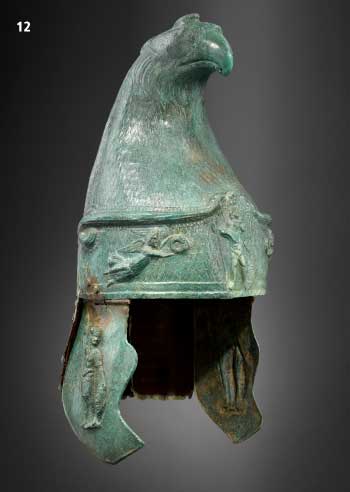
© Musée d'Art Classique de Mougins
In ancient times two teams were chosen from a cavalry unit (and we know both mixed and ordinary cavalry units took part) and they would perform an elaborate series of manoeuvres to entertain their commander and his guests. It began with all of them charging on to the display area en masse, then splitting into their teams, some (but not all) of whom would be wearing elaborate face-mask helmets. One team lined up in a testudo (the cavalry version of the infantry tortoise formation) with their shields over their horses' rumps whilst the other team galloped past and hurled dummy javelins at them.
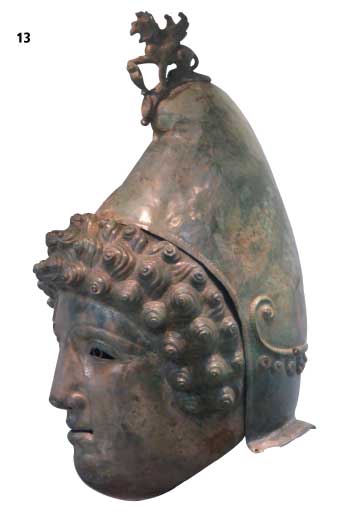
What followed was an increasingly elaborate display between the two teams demonstrating horse control, accuracy in throwing missiles, and physical agility on the part of the riders (who, at one point, were required to jump onto their horses fully armed).
All the renactment manoeuvres will be based on genuine cavalry tactical formations and, using 30 fully equipped Roman cavalrymen, Turma! will be the first recreation of the hippika gymnasia in the United Kingdom and the largest anywhere. Part show and part archaeological experiment, it will take place on 1 and 2 July in Bitts Park in Carlisle.
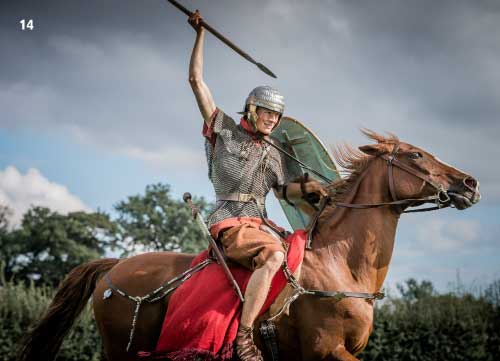
Bitts Park is immediately next to the site of the Roman fort at Carlisle (now largely underneath the medieval castle), where Roman cavalry may once have performed these 'sports' (Carlisle fort, although not part of Hadrian's Wall, had a cavalry garrison). Wooden writing tablets excavated from the site reveal important details about the running of a cavalry unit, including the issue of rations and fodder and a list of missing equipment.
In this, the 1900th anniversary year of Hadrian becoming Roman emperor, the Hadrian's Cavalry exhibitions provide an opportunity for a themed visit along Hadrian's Wall and it promises to be a once-in-a-lifetime experience.
• Hadrian's Cavalry is funded largely by Arts Council England's Museum Resilience Fund. Hadrian's Cavalry guidebook can be bought from Vindolanda or online at www.vindolanda.com/books/hadrians-cavalry-book for £4.99 plus postage.
